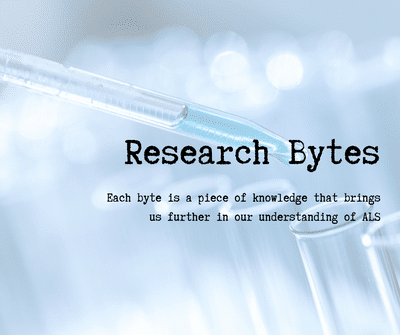


Packard scientists have identified a new mechanism by which mutations in the UBQLN2 gene lead to ALS

Teams from the University of Maryland and Harvard University have showed that ALS-linked mutations in UBQLN2 compromise import of proteins in large clumps in the cytoplasm.
Packard scientists have identified a new mechanism by which mutations in the UBQLN2 gene lead to ALS and frontotemporal dementia (FTD). Brian Lin, a PhD student in Mervyn Monteiro’s laboratory at the University of Maryland School of Medicine together with colleagues from the institution and from Harvard University showed that ALS-linked mutations in UBQLN2 compromise import of proteins into the mitochondria, the power factory of cells. This creates major problems in energy-hungry motor neurons in ALS, the authors say, and provide a new biochemical pathway to investigate for potential therapeutic targets.
The results were published recently in Human Molecular Genetics.
UBQLN2 is part of a family of proteins that function in protein quality control, shuttling old and damaged proteins to the cell’s recycling pathways, known as the proteasome and autophagy. Studies had shown alterations to these pathways in ALS animal models, and in induced pluripotent stem cells (iPSCs) derived from ALS patients. Other studies showed abnormalities in the appearance and function of mitochondria in motor neurons. Whether mutations in UBQLN2 could lead to similar issues was unclear.
In mice that were engineered to carry the P497S ALS/FTD mutation in UBQLN2, Monteiro and colleagues found that these animals had sharply reduced levels of a variety of key mitochondrial proteins in their spinal cords, including those that are essential for mitochondrial import of proteins made in the cytoplasm. Other experiments showed normal levels of the RNA for these proteins, suggesting that the problem happened after the proteins were made.
When the researchers examined mitochondrial function in the P497S mice, they found mitochondria purified from spinal cord cells and from the hippocampus in older animals had significantly steeper decline in activity than younger animals. Lin and colleagues also found that the mitochondria in motor neurons of the P497S mice were noticeably shorter and had fewer inner folds known as cristae than in controls.
After completely inactivating the UBQLN2 gene in cultured cells, the scientists discovered similar mitochondrial defects, suggesting that the changes they found in the mutant P497S mice may derive from loss of functional UBQLN2 protein expression. The mitochondria in the UBQLN2-knockout cells also had defects in respiration, the process by which the organelles use oxygen in the production of energy. As in the P497S mice, the cells lacking UBQLN2 had shorter mitochondria, which is typically linked to a decline in mitochondrial health.
The Monteiro group next investigated why UBQLN2 is needed for mitochondrial health. They found UBQLN2 binds newly synthesized mitochondrial proteins prior to mitochondrial import. By comparing their binding strength, they found UBQLN2 proteins carrying ALS mutations have weakened binding activity with mitochondrial proteins than the normal UBQLN2 protein. To understand the requirement of this binding they followed the fate of a mitochondrial protein that had been tagged with a GFP fluorescent reporter protein. In normal UBQLN2-expressing cells the GFP-tagged protein correctly localized to mitochondria, but in cells lacking UBQLN2 the protein failed to incorporate into mitochondria and instead accumulated in large clumps in the cytoplasm.
When the researchers re-expressed wild-type UBQLN2 in cells lacking UBQLN2, they were able to partially rescue mitochondrial targeting and respiration, but this didn’t happen when they re-expressed the P497S mutant UBQLN2 gene. Monteiro and colleagues say that one potential explanation as to why UBQLN2 mutations cause motor neuron disease is that the mutations compromise mitochondrial function through loss of UBQLN2 activity in mitochondrial protein targeting, which they suspect may have dire consequences for motor neuron survival because of their very high energy requirements. Their studies suggest that UBQLN2 mutations may trigger ALS pathogenesis by causing loss of mitochondrial power.
